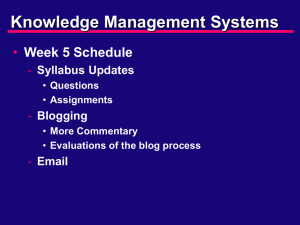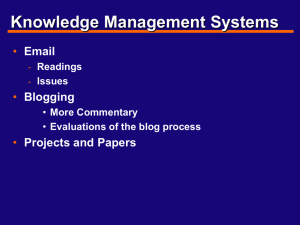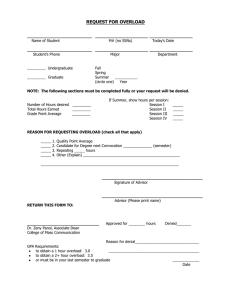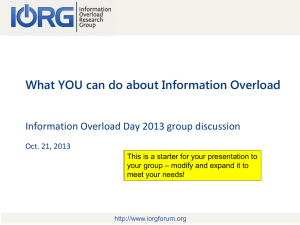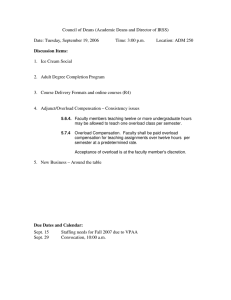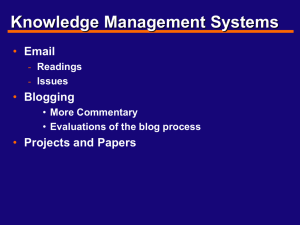E-mail Stephanie McFarland Knowledge Management Systems February 22, 2005
advertisement
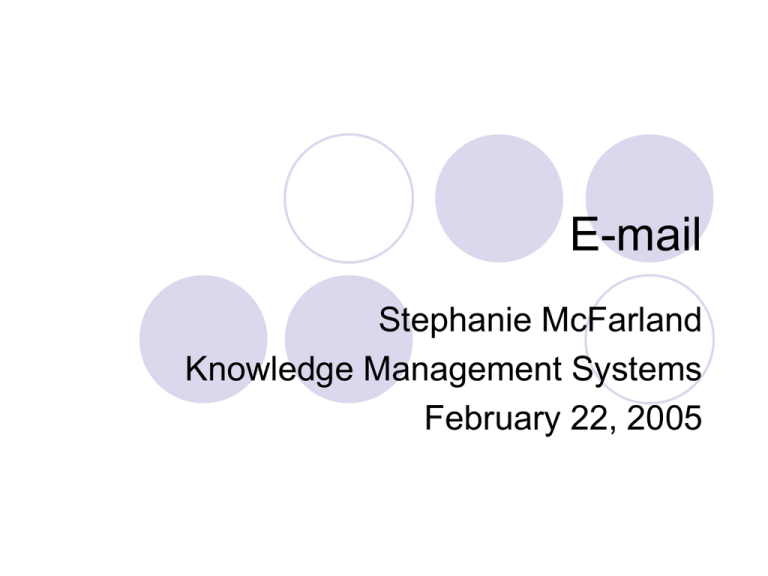
E-mail Stephanie McFarland Knowledge Management Systems February 22, 2005 Overview E-mail as Habitat Personal Information Management Task Management Communication E-mail Overload Conversation- and Task-Centric E-mail Designs Discussion/Questions? Some Thoughts About E-mail “E-mail is the major means of non-face-toface communication.” “E-mail has evolved to a point where it is now used for multiple purposes.” “E-mail is co-opted by its users for many information management functions.” “E-mail is the central place from which work is received, managed, and delegated in organizations.” E-mail as Habitat : Information and Task Management Attachments allow flow/exchange of documents and collaboration Address book = Modern Rolodex Alerts keep e-mail users tuned in Sending reminders to self as a way of managing schedules Priority labels assign importance to info Calendar keeps track of deadlines, meetings Folders compartmentalize information and keep track of tasks E-mail as Habitat: Organizing and Accessing Information Filters Folders Sender Organization Project Personal interests (professional or private) Searching Sorting E-mail as Habitat: Factors Affecting Personal Information Management Status/position: Managers use filtering, searching more due to the volume of e-mail Concept of paper trail Experience: More e-mail use leads to more e-mail use Organization: Culture affects frequency and function of e-mail use E-mail Overload Filters Folders Sorting Searching Spring cleaning Tagging … Is any of this really helping? E-mail Overload “E-mail users clearly feel overwhelmed and daunted by the time it takes to deal with all the work coming in through this medium.” — Taking Email to Task “Certain individuals experienced major problems in reading and replying to e-mail in a timely manner, with backlogs of unanswered e-mail, and in finding information in e-mail systems.” — Email Overload E-mail Overload Issues with trying to manage e-mail: Alphabetical ordering of folders If filtered, new e-mails are easy to miss Searching takes too long Users may not remember folder labels Folders too small (one or two items) Users don’t want to file what’s “active” “I want to keep it in my ‘in’ box, keep it current!” E-mail Overload E-mail used for… Task Management Personal Archiving (filing) Asynchronous Communication (independent, but concurrent ongoing conversations) E-mail Conversations “A mismatch between the user interfaces for email clients and user needs for handling email.” “Messages should be viewed as elements of a conversation rather than as independent elements.” “Viewing messages as conversations … will provide better local context, which can help one better understand the meaning of the message.” Sequential and Tree Models of Conversation Sequential Which of these two messages was sent first? Which messages were sent before this one? Which messages were sent after this one? Tree Which message is the root of the conversation tree? Which message is this one a reply to? Does this message have any replies? Which messages are replies to this one? Mixed-Model E-mail Client answers all seven questions at once Taking E-mail to Task Taskmaster system created to “recast email as task management and embedding task-centric resources directly in the client” User studies with Outlook and Eudora Found that number of threads one is tracking and the length of intervals between messages in those threads produced a sense of “overload” more than volume/quantity of email Thrasks Interdependent tasks (tasks with obligations that also depend upon the to-dos of others) that make up threads of message files, links and drafts Taskmaster supports collections of these “thrasks” — related incoming messages are grouped together based on analyzing message data Incoming and outgoing messages are viewed together Taskmaster In Practice Users stopped using it because of missing features (printing, formatting) Problems with PC compatability Equality for all content — documents and links as “first-class citizens” displayed in the preview pane Improving E-mail Should e-mail be task-centric? Conversation-centric? Which is better? More features? Less features?
